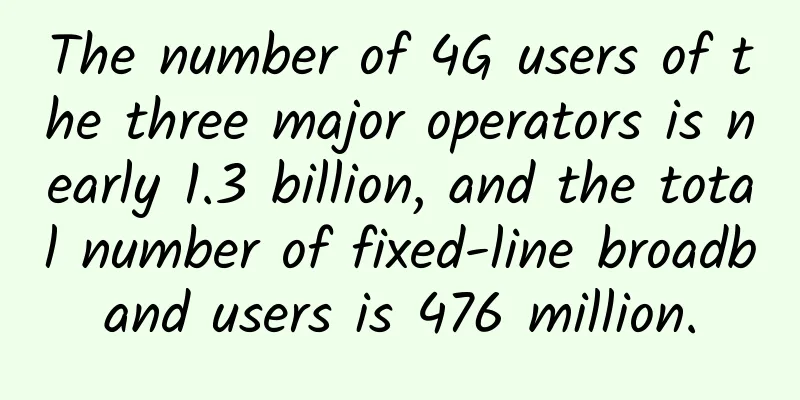Farewell to the NYSE! The NYSE maintains the delisting decision of the three major operators

|
On May 7, the three major operators issued an announcement stating that the New York Stock Exchange said it would initiate delisting procedures for the three Chinese telecom operators. The announcement shows that the New York Stock Exchange Committee upheld the decision of the New York Stock Exchange regulatory department to restart the delisting process of the company's American Depositary Receipts (ADRs). It is expected that the New York Stock Exchange will submit Form 25 to the U.S. Securities and Exchange Commission to cancel the listing and registration (delisting) of the company's American Depositary Receipts. On November 12, 2020, the Trump administration issued an executive order prohibiting American investors from investing in companies owned or controlled by the Chinese military. The regulation may affect 31 Chinese companies including China Telecom, China Mobile, and Hikvision. The move is intended to prevent American investment companies, pension funds, and other institutions from buying and selling shares of these Chinese companies, which were identified by the U.S. Department of Defense as supported by the Chinese military earlier this year. The executive order will take effect on January 11 next year. The order will prohibit American investors from making any transactions in the securities of the above-mentioned Chinese companies. At the same time, it also prohibits Americans from buying and selling the securities of these companies within 60 days of being identified as "Chinese military enterprises." Some experts said that the three major operators are all listed in Hong Kong, and the delisting of ADRs in the US market will not have a big impact on their normal trading in Hong Kong. It is more reflected in expectations and confidence. The main factor affecting investors' expectations of operators in the future is actually their performance in the domestic market. Therefore, for operators, the fundamental thing is to do a good job in the domestic market. As long as the domestic market develops steadily, these external influences are controllable. On March 9, China Telecom issued an announcement on the Hong Kong Stock Exchange, stating that in order to seize the opportunities of digital development, improve corporate governance, broaden financing channels, accelerate reform and development, promote the implementation of strategies, and achieve high-quality development, China Telecom intends to apply for this A-share issuance and be listed on the main board of the Shanghai Stock Exchange. The announcement shows that, subject to the minimum issuance ratio and other regulatory requirements of the listing place, China Telecom intends to publicly issue no more than 12,093,342,392 A shares (i.e., no more than 13% of the company's total issued share capital after this A-share issuance, before the exercise of the over-allotment option). And in accordance with the provisions of relevant laws, administrative regulations, departmental regulations and relevant normative documents, formulate this issuance plan. The funds raised will be used for 5G industrial Internet construction projects, cloud-network integrated new information infrastructure projects and scientific and technological innovation research and development projects. |
<<: Three major operators: New York Stock Exchange maintains delisting decision
Recommend
Wireless Broadband Alliance: Wi-Fi 6/6E adoption will reach 83% by 2022
[[429983]] A key finding from the latest cross-in...
5G is entering a period of explosive growth, and it is time for millimeter wave to debut
[[433374]] In 2021, the global 5G network constru...
Maxthon Hosting: 56 yuan/month KVM-2GB/40GB/400GB/Korea CN2, Hong Kong CN2, Japan, US CN2, etc.
Aoyozhuji, a long-established foreign VPS service...
Mobile data will no longer charge roaming fees? You may even spend more money because of it
Starting from July 1, the mobile data roaming cha...
HTTP/3 Principles and Practices
After the HTTP/2 standard was published in 2015, ...
Beware of online scams and cyber attacks during the World Cup! F5 ensures application security, allowing fans to watch the game with peace of mind
It is well known that the holiday shopping period...
Last 5 days! VMISS 30% off, Korea/Japan/Los Angeles CN2 GIA/9929/CMIN2 monthly payment from 18 yuan
VMISS's Spring Festival promotion has only a ...
The interviewer asked about the ZAB protocol right away, and I was trembling...
[[391275]] Zookeeper achieves the final consisten...
ThomasHost: $5/month KVM-2GB/50GB/1G port unlimited traffic/6 computer rooms available
I searched and found that the blog shared informa...
NVIDIA Launches 6G Research Cloud Platform to Advance Wireless Communications with AI
NVIDIA today announced a 6G research platform tha...
5G bearer network operation is difficult, but machine learning technology can solve it
5G commercialization is getting closer and closer...
From 76 million 5G connections, we found the 7 most promising 5G IoT applications
5G is the fifth generation of mobile communicatio...
How to continue writing “Extraordinary Jiangsu”?
[51CTO.com original article] On August 8, at the ...
[New Year's Day] DogYun Elastic Cloud 30% off/Classic Cloud 20% off 16 yuan/month, top up 100 yuan and get 10 yuan free, independent server 200 yuan/month
DogYun (狗云) has launched a promotional event duri...
Let's talk about the communication protocol I2C subsystem
I2C Transfer Definition of timing To explore the ...




![[6.18] RackNerd: $17.88/year KVM-1.8GB/18GB/5TB/Los Angeles Data Center](/upload/images/67cac3467c835.webp)




